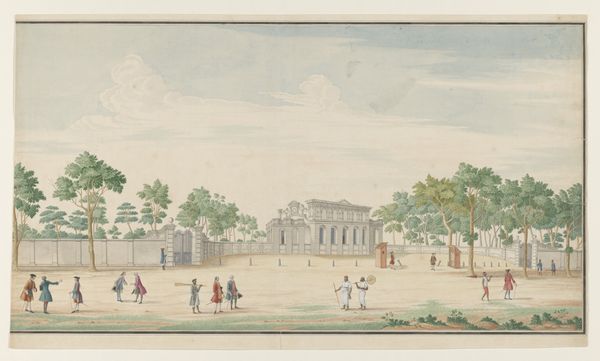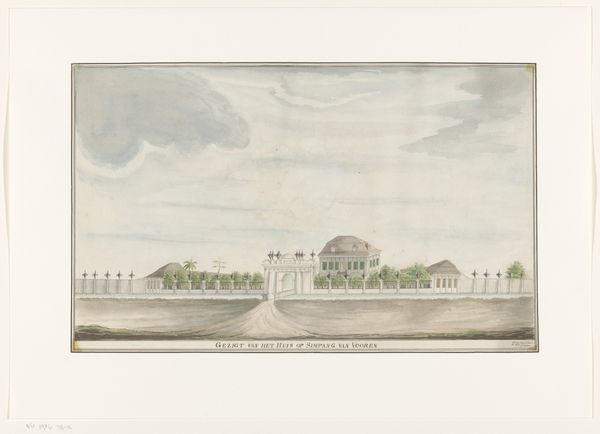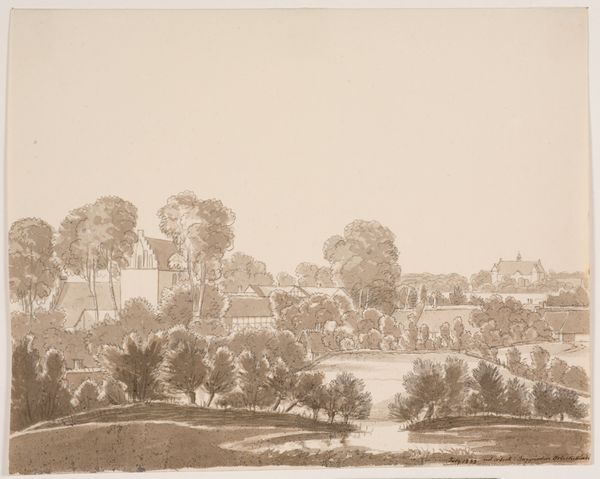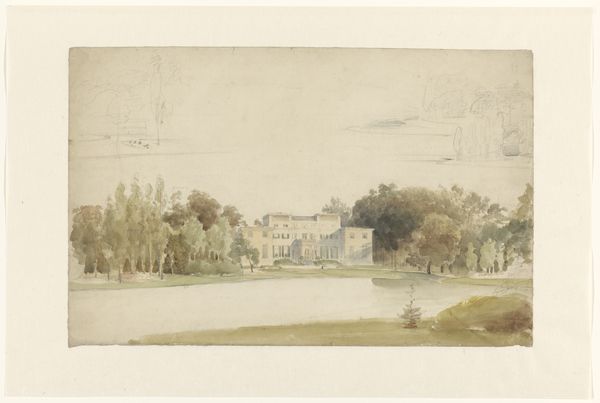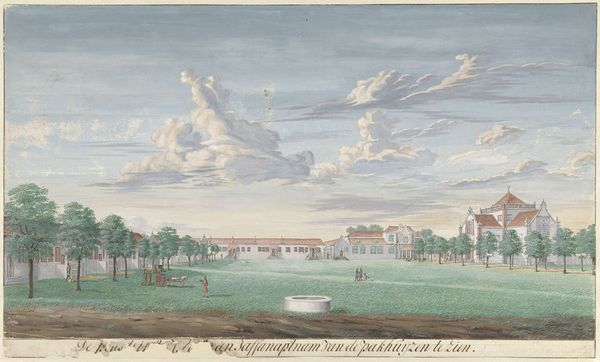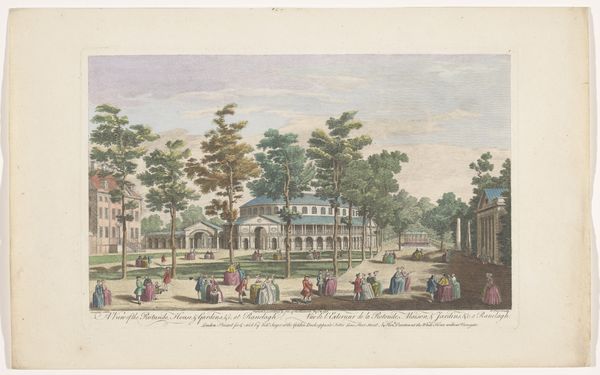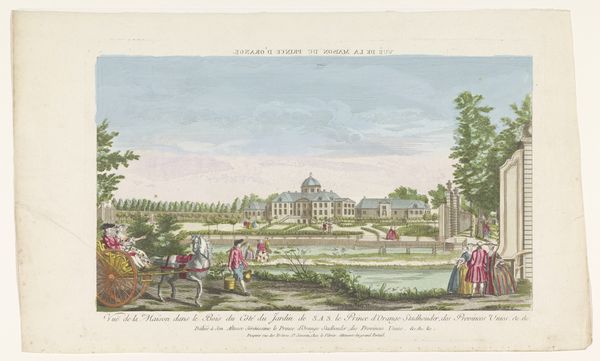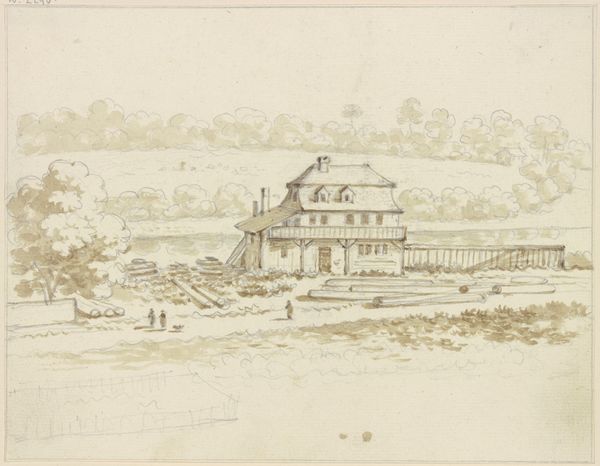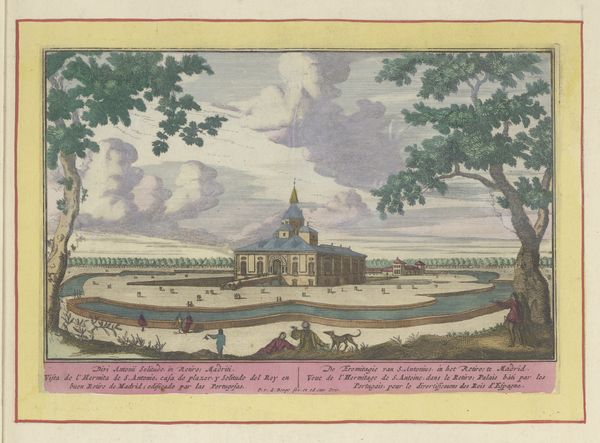
painting, watercolor
#
painting
#
landscape
#
watercolor
#
coloured pencil
#
orientalism
#
horse
#
genre-painting
Dimensions: height 355 mm, width 633 mm
Copyright: Rijks Museum: Open Domain
Editor: This watercolor by Alexander Ludwich Brockmann, circa 1860, is titled "Gezicht op de suikerplantage Catharina Sophia," or "View of the Catharina Sophia Sugar Plantation." The serene landscape belies a disquieting sense of order and control, especially with the smoking chimneys in the distance. How should we interpret the scene within a larger social framework? Curator: Indeed, this seemingly picturesque scene offers a window into the complex and often brutal realities of plantation life. How does Brockmann’s depiction engage with the visual conventions of landscape painting at the time, and what purpose does it serve? The neat, orderly arrangement of the grounds and buildings suggests a desire for control and efficiency. However, we must consider what is left unseen: the exploitation and forced labor that underpinned the plantation system. Editor: So the beauty of the image is deceptive. Does Brockmann’s decision to highlight the order of the plantation implicate him in supporting that system, or is he simply documenting the landscape as he found it? Curator: That's precisely the kind of critical questioning we should bring to this work. The art market and exhibition venues of the time largely catered to audiences that held favorable views of colonialism and slavery. Paintings such as these are important historical records, but it's key to interrogate whose perspective is being presented. Did Brockmann intend to glorify or to merely record? And how do social and political power relations come to bear on visual representation? Editor: This definitely shifts how I view the composition. I now realize I was glossing over how stylized the scene is, especially the subtle suggestion of exploitation despite its apparent calm. Thanks, I have much to ponder! Curator: You're welcome. Remember, analyzing art always benefits from considering its historical and political contexts. They deeply inform not only how works are made but how they are viewed across time.
Comments
No comments
Be the first to comment and join the conversation on the ultimate creative platform.
